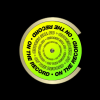-
 play_arrow
play_arrow
Clubalicious Clubalicious Radio
-
 play_arrow
play_arrow
London Calling Podcast Yana Bolder

Although Steve Winwood was just shy of 19 when he formed the group Traffic in the spring of 1967, he was already a veteran performer.
Having played with his brother Muff in jazz bands in his early teens, the younger Winwood was fronting the pop/R&B-flavored Spencer Davis Group by the age of 15. He was lead singer, guitarist, organist and co-writer of the group’s two biggest hits, “Gimme Some Lovin’” and “I’m a Man”—quite an auspicious beginning for the Birmingham, England, native. After his sojourn with the Spencer Davis Group, Winwood started Traffic with three friends—guitarist Dave Mason, drummer Jim Capaldi and reeds player Chris Wood—all of whom had appeared, uncredited, on an American remix of the SDG’s “Gimme Some Lovin’” and then later on “I’m a Man.”
The SDG sessions involving the future Traffic members were among the first to be helmed in England at Olympic Studios by producer Jimmy Miller, an American who would go on to be one of the most successful producers in Britain during the late ’60s and early ’70s. (There was a precedent for American producers doing well in England—Shel Talmy had cut early hits with both The Kinks and The Who.) Those proto-Traffic “I’m a Man” sessions were also the first pairing of Miller and a young Olympic engineer who would also make quite a mark in rock history, Eddie Kramer, who, as fate would have it, had worked with Talmy at Pye Studios before going to Olympic.
“Jimmy Miller was my mentor,” Kramer says from his Hudson Valley home, north of New York City. “Bob Auger [at Pye] and Keith Grant from Olympic are the guys who taught me most of what I know about engineering, but Jimmy was the guy I owe for my initial forays into producing; he’s definitely the guy who influenced me the most. He was a genius and a wonderful human being. He just had the most amazing ability to take a group of musicians, rehearse them, get them in the studio and get them so excited about what they were doing and make it all seem so much fun that I realized that this is the way that records should be produced. He was just a terrific catalyst.
He had a great sense of humor. And he was unstoppable in the sense that his energy level was always up. He really, really dug the music; he was always so into the band: ‘How can I get you guys to feel this track the way I’m feeling it?’ He would sing parts. He was like a master of ceremonies.”
Miller became such good friends with Winwood that he was the natural choice to produce Traffic’s first album, which was cut at Olympic late in the fall of ’67 and released around Christmas that year. But before Traffic was ready to record, the group spent a few idyllic weeks in a small cottage in rural Berkshire, spreading their wings creatively, working on songs together and trying to establish a group identity.
Most of the first album’s material was born at pot-and psychedelics-fueled jam sessions at the cottage, including this Classic Track, “Dear Mr. Fantasy.” In the mid-’80s, Capaldi told me about the genesis of that song:
“It was the summer of 1967, and we were all living in this cottage in Berkshire. We were one of the first English bands to live together like that. We thought we’d try it and see if anything came of it. I remember the day very clearly: A bunch of friends came over early in the day and we had quite a party. It was sunny and the corn was coming up nicely around the cottage, and we were quite enjoying ourselves, if you know what I mean. As things finally wound down in the evening, I was sitting around just doodling, as I would often do, drawing this character. It was this little fellow with a spiked sun hat. He was holding some puppeteer’s strings, and the puppet hands on the end of the strings were playing a guitar. Under that I just scribbled some words: ‘Dear Mr. Fantasy,’ play us a tune, something to make us all happy’ and on a bit. It was nice, but I didn’t think much of it; certainly, it wasn’t intended to be a song.
“I crashed out eventually, but I remember hearing Steve and Chris playing around after. The next day, I woke up and found that they’d written a song around the words “Dear Mr. Fantasy” and a drawing I’d done. I was completely knocked out by it. Chris wrote that great bass line. We added some more words later and worked out a bigger arrangement, too. Those were very happy days for Traffic.”
According to Capaldi, when the group later went to Olympic to cut “Dear Mr. Fantasy,” he found “We tried originally to record it regularly, with all of us in little booths and all, but we weren’t feeling anything. So we got rid of the booths and we all played together in this big room. We ended up cutting the song very live.”
Classic Tracks: The Grateful Dead’s “Touch of Grey”
Kramer: “We had the band set up on a riser at one end of the studio, which is a big room—maybe 65, 70 feet long by about 45 wide with about a 30-foot ceiling. They were set up as if they were onstage and I recorded them live, straight to 4-track. I can remember with such clarity the time when we were actually cutting ‘Dear Mr. Fantasy’: We were in the middle of a take and there’s a part where the tempo changes—it jumps—and I look around and Jimmy Miller’s not in the control room. The next thing I see out of the corner of my eye is Jimmy hauling ass across the room, running full tilt. He jumps up on the riser, picks up a pair of maracas and gets them to double the tempo! That, to me, was the most remarkable piece of production assistance I’d ever seen. They were shocked to see him out there, exhorting them to double the tempo. Their eyes kind of lit up. It was amazing. That was Jimmy!”
Olympic was one of only a few independent studios in London in the late ’60s; label-affiliated facilities such as EMI (Abbey Road), Decca and others still ruled the roost. By the time “Dear Mr. Fantasy” was recorded, Olympic had moved from its original West End space (it opened in the early ’60s in a former Dutch Reform church that was reputed to be haunted) and was now in the Barnes area of London in an old theater. The big room there attracted lots of music-for-film work, and as Traffic, the Rolling Stones, Led Zeppelin and many others also discovered, it was a great live rock ‘n’ roll room.
“One of the things that made Olympic go,” recalls Kramer, who started working there in 1966, “was this gentleman by the name of Dick Swettenham—he designed the early Olympic console. He was designing and putting together a brand-new concept of a console, which was, in essence, the Helios desk. Dick was one of these prototypical English boffin guys: big orange beard, thick glasses, white lab coat. But a great guy! The console he built was brilliant, and I had the unenviable task of helping the guys wire the new Olympic, which had been an old movie theater. It was c-shaped, and it was essentially a six-output desk, with four main buses and two extra ones if you were doing 6-track work for film. Above the control room was a projection booth that had synchronized projectors and mag dubbers; we could record two 3-track dubbers together, locked up. Anyway, Dick designed a wonderful board; it sounded amazing. It was the first all-transistorized modular console where everything pulled out. The faders were a module, the routing was a module with its own nice little slide fader for the sends—just beautifully designed, and ergonomically it was great; you could get to everything so easily.”
Sessions were recorded on a pair Ampex half-inch 4-tracks, bouncing parts back and forth to make up for the paucity of actual tracks.
“I went four-to-four at least three times,” Kramer says. He doesn’t recall much about the song’s miking specifics, but notes that in photos he took during the sessions, Winwood sang into a Beyer M 160. “I used that on vocals a bit. I also liked [Neumann] 67s, of course: They were the ‘go-to’ mics; I loved my 67s.”
Kramer also favored during that era AKG D-12s, D-20s and D-30s: “Those were the coolest,” he says of the D-30s. “Great bass drum mic. We also had [Neumann] KM56s; I used them on hi-hats. And I used a lot of 67s on toms.” He miked the B3’s Leslie cabinet in stereo, top and bottom.
“I have such fond memories of those sessions,” Kramer says. “Everybody was thinking in terms of, ‘How do we make this record better and more exciting?’ And Jimmy Miller was the ringleader, pushing everybody’s buttons in the right way, in a nice way; mine, too. He would allow me to do wacky things, and he would encourage it—not that I needed much encouragement—but Jimmy always had a firm hand on the tiller.”
By the time Traffic’s debut album (titled Mr. Fantasy) was released in December 1967, the group had scored three hit singles in the UK with Winwood and Capaldi’s “Paper Sun,” Mason’s “Hole In My Shoe” and the group-penned “Here We Go ‘Round the Mulberry Bush” (from the film of the same name), none of which appeared on the original British mono pressing of the LP. The first American version of the album (which was in stereo) was called Heaven Is In Your Mind, after another song on the album, but it was quickly changed to Mr. Fantasy, and it included the three UK singles. The song “Dear Mr. Fantasy” was never a hit single, but it quickly became an underground radio favorite in the U.S., and has long been considered one of the group’s true classics, along with such tunes as “Glad,” “Freedom Rider,” “John Barleycorn (Must Die)” and “Low Spark of High Heeled Boys.”
The group weathered numerous personnel and style changes over the course of several albums in the late ’60s and early ’70s, but still amassed an impressive, if disjointed, discography. Winwood, of course, has had a very successful solo career. Eddie Kramer went on to engineer legendary albums by Jimi Hendrix, Led Zeppelin and many, many more over the course of a brilliant career that continues to this day. Jimmy Miller did more work with Traffic and Winwood, produced the Rolling Stones’ great masterpieces—Beggar’s Banquet, Let It Bleed, Sticky Fingers and Exile on Main Street—and numerous other groups ranging from Spooky Tooth to Motorhead. He died in 1994.
This article was first posted in February, 2003.
Written by: Admin
Similar posts
Recent Comments
No comments to show.Featured post

Latest posts
Current show

Get Twisted
Tough Love
London-based duo Tough Love has been at the forefront of the house scene for some time now since they started out in 2011. Their distinct production and energetic, bass-heavy DJ sets have created a cult following of hard-core fans across the UK and beyond.
closeUpcoming shows

Love To Be
The Global Connection
21:00 - 23:00
On The Record
Insomniac Events
23:00 - 00:00
Femme House
Lp giobbi
00:00 - 01:00
On The Record
Insomniac Events
01:00 - 02:00
Fresh Is Fresh
This Weeks Hottest Releases
02:00 - 09:00Chart
Powered by Dee jay promotions visit us












 Invalid license, for more info click here
Invalid license, for more info click here